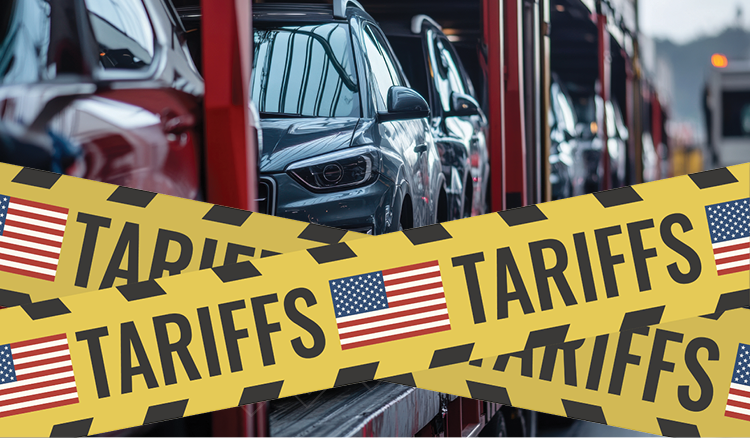The Labor Shortage: What’s Changed and Why It’s Here to Stay
You’ve seen the headlines and heard the talking points on what’s happening in the labor market in the US. But what does this mean for you as someone in manufacturing and logistics, and more importantly, how can you adapt to this reality and come out stronger on the other side?
At Veryable, we are familiar with the daily challenges companies face in matching their labor capacity to demand, because we help them adapt and win by using an on-demand labor model.
In this article, you’ll learn why the labor shortage is here to stay and what you can do about it.
What do we mean by “labor shortage”?
The term “labor shortage” implies that there aren’t enough working-age individuals available to fill the open roles needed to maintain the status quo in the labor market. This is a different problem than unemployment, which typically signals that there are more people than available or desirable jobs.
Today, there are as many open jobs as there are people out of work, but people aren’t filling these roles. This has persisted for many months, and businesses have blamed everything from the pandemic to the unemployed for the issues they’re having.
What is the “labor shortage” really, and what causes it?
Businesses want to stay open. Workers want the work they do to be worth their time. There are plenty of workers who are available to work, but the work being made available to them isn’t at the right price or with the right conditions attached to it.
There’s not so much a labor shortage as there is a mismatch in what businesses are offering and what workers are seeking in the labor market.
Right now, the problem is that the typical business relied on paying lower wages before the pandemic and maintained a set headcount with little flexibility for workers. The lower wages they paid before the pandemic became a core part of their business strategy, along with expecting overtime and building a high turnover rate into their hiring strategy. This “warm bodies” approach has worked for a long time, but might be seeing its day of reckoning.
Workers are not happy with low wages and rigid schedules any more, because they have had time during forced shutdowns to consider what they need and want. Plus, workers have spent less and saved more during the pandemic, giving them a financial cushion and collective leverage to bargain for flexibility and higher wages.
So we are at an impasse until either A) workers burn through their financial cushion and begrudgingly return to work at pre-pandemic wages or B) businesses incentivize workers with higher wages, benefits, and flexibility.
Scenario A might result in a return to the “warm bodies” staffing strategy, but with workers who have experienced a different way of doing things and have seen their peers gain flexibility and better pay. The perceived unfairness of this situation could lead to lower morale, lower performance, and overall worse results for the business and the worker.
Scenario B would hurt businesses’ bottom lines initially, but would pay off in the long run. The higher labor costs and challenges that come with implementing flexible work schedules would surely create a headache for businesses at first. However, many businesses that have tried these approaches to attract workers have already seen them pay off as they retain workers and grow despite the pandemic and supply chain issues.
Is a competitive labor market here to stay?
Aside from changing mindsets towards work and a preference for flexibility among workers, there is the fact that the workforce is aging. People are living longer and working longer. Baby Boomers are retiring en masse. Younger adults are having fewer children than prior generations. This will cause a significant contraction in the size of the labor market if the trend continues. As the workforce continues to age and the number of available workers declines, a tight labor market could be the reality for the foreseeable future. Companies that adapt to this reality will be positioned for success.
How can your business succeed in this environment?
Businesses can win in a tight labor market by adopting a flexible approach to labor capacity. This means learning how to run a lean core staff of full-time employees and finding workers as needed to address incremental demand. This model can adapt to the rapid waves of change we’re seeing today due to the pandemic, government interventions, and supply chain issues. The old, rigid model of staffing with full-time employees only won’t get the job done when workers are focused more than ever on flexibility and demanding higher wages. The other approach of reverting to child labor (as some businesses are attempting) is certainly not a move in the right direction when there are plenty of working-age adults who would work under the right conditions. Both of these models are unsustainable and out of touch with reality.
Instead, you should adopt a new approach that supports your full-time employees and gives more working-age people the chance to enter the workforce on their terms. Adopting a flexible approach to your labor capacity is a big change that will unlock new levels of efficiency and growth. We aren’t advising you to fill gaps in your FTE headcount or cut your number of FTEs. We are saying you can address incremental demands placed on your business with incremental numbers for a short increment of time for a proportional amount of workers. On-demand labor is the best way for manufacturing and logistics companies to face the unique set of challenges they are facing today. With this flexible approach to your labor capacity, you match demand on a daily basis by inviting workers seeking flexible work arrangements to handle the incremental work.
“What needs doing?” is a better question than “how will I fill my headcount?”
While many businesses seek to catch back up to their former headcount without gaining efficiencies, it is wiser in the long term to take stock of what needs to be accomplished in your business and find a more efficient way to get it done.
If you first answer the question of “what needs to be done in my business?” then you have room for innovation. You might discover a more efficient way of getting from Point A to Point B if your goal is to get the work done more efficiently, rather than trying to fill a headcount gap because that’s the way it’s always been done.
This might mean hiring more workers, but it’s more likely this will mean developing a flexible labor capacity by adding workers on demand to get the work done. This gives flexibility to the workers who want it, stability to the others, and the flexible capacity you need to get the work done efficiently.
How on-demand labor helps solve the labor problem
On-demand labor is a way to adapt to changing expectations among workers while benefiting your business tremendously. It answers the workers’ calls for flexibility and answers your company’s need for incremental amounts of work as demand fluctuates.
In other words, you might not be able to put the genie back in the bottle, but that doesn’t mean you have to rely on wishes to see results in your business.
Learn more about how flexible labor capacity benefits your business on our blog defining the on-demand labor approach for manufacturing and logistics.
Previous Posts
Trump 2.0 Week 10 Recap: New Tariff-Related Developments That Manufacturers and Distributors Should Know About About
The Future of Manufacturing and Logistics
Create a free business profile today to explore our platform.






